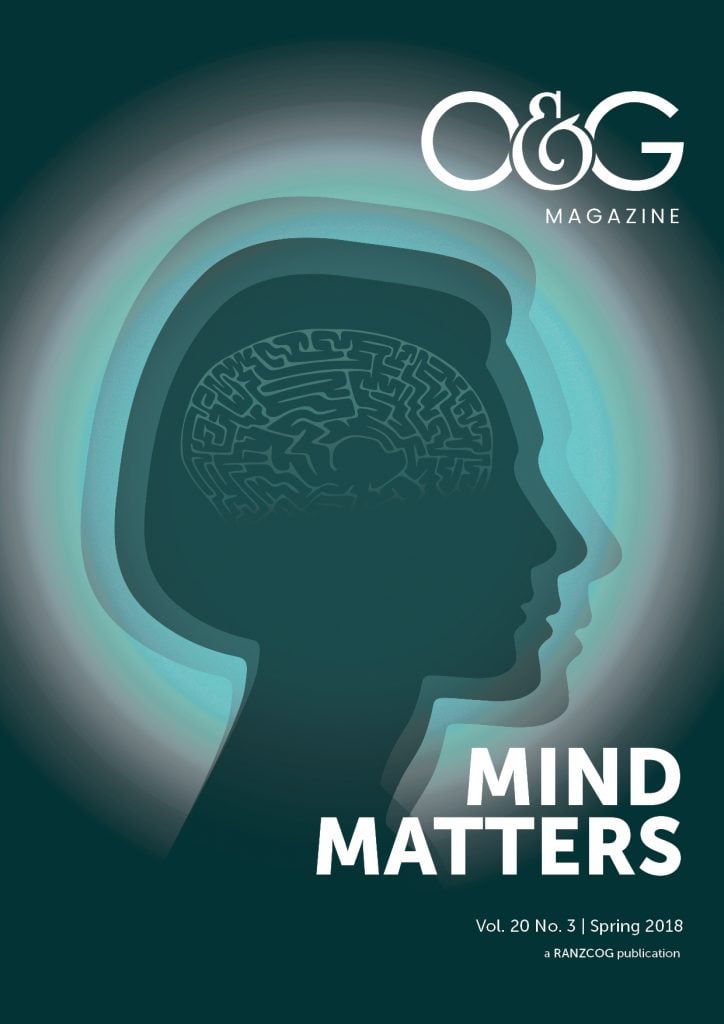Dependence syndrome, which has replaced the term ‘addiction’ in the International Statistical Classification of Diseases and Related Health Problems, 10th revision (ICD-10),1 is a cluster of physiological, behavioural and cognitive phenomena in which the use of a substance takes on a much higher priority for an individual than other behaviours that once had greater value.2 It has been defined as a primary chronic disease of brain reward, motivation, memory and related circuitry. Dependence syndrome involves an inability to abstain, coupled with cycles of relapse and remission. Without treatment or engagement with recovery efforts, dependence syndrome is progressive and can result in permanent disability and death.3
In 2011, the New Zealand National Committee for Addiction Treatment (NCAT) described alcohol and drug misuse as the sixth highest contributor to the national burden of disease.4 In 2010, the New Zealand Ministry of Health (MoH) estimated that 12.3 per cent of the New Zealand population would encounter a substance use disorder during their lifetime.5 The Australian National Drug Strategy Household Survey, in 2016, reported that 15.6 per cent of the population over the age of 12 had used an illicit drug in the previous 12 months, and over 17 per cent of the population consumed alcohol in quantities that exceeded lifetime risk guidelines.6
Among those with dependence syndrome, rates of psychiatric illness are up to 70 per cent.7 Psychiatric illness is strongly associated with increased suicide risk during pregnancy. Suicide is the leading single cause of maternal mortality in New Zealand and the fifth most common cause of maternal death in Australia. These rates are significantly higher among Maori, Aboriginal and Torres Strait Islander women.8,9
Antenatal care
Universal screening and referral for treatment of pregnant women for drug and alcohol misuse is recommended at the first antenatal visit. Several scoring systems have been validated to identify women at high risk for ongoing substance use in pregnancy.10,11 Patients who use drugs during pregnancy represent a diverse group and there may be features present that increase the likelihood of substance misuse and dependence. These include late booking or presenting unbooked in labour, detection of blood-borne infection on antenatal screening, itinerant lifestyle and pre-existing psychiatric illness. The involvement of child protection services in previous pregnancies is also common for women with a history of substance misuse. It is important to perform a comprehensive clinical examination to look for the long-term sequelae of drug misuse, such as chronic liver disease and valvular heart disease.
Key to providing care for women and families with dependence disorders is a multidisciplinary team (MDT) approach, involving midwives, obstetricians, addiction specialists, counsellors and primary support or social workers. Continuity of care should be maintained throughout the pregnancy and provided in a confidential, non-judgemental and culturally sensitive manner. A pregnancy care agreement should be drawn up between the patient and the MDT for the pregnancy and postpartum period, and for transfer of care at discharge from maternity services. Compliance with the care agreement should be reviewed at every visit, particularly if the woman is receiving withdrawal treatment.12
Abrupt cessation of some substances, particularly opiates and benzodiazepines, is not recommended during pregnancy, due to the risk of spontaneous miscarriage and preterm birth.13 Agonist treatment, such as methadone, is recommended during pregnancy, with the safest time for conversion being the second trimester.16
Labour and birth
Early attendance to hospital in labour is imperative to reduce self-medication, monitor substance use and confirm fetal wellbeing.17 If induction of labour is indicated, the risk of neonatal abstinence syndrome (NAS) requiring admission to a neonatal unit should be considered when timing delivery.18 The anaesthetist should be contacted early in the admission to review potential issues with venous access and plan for adequate analgesia. Women on long-term opioid medications should be advised to continue these in labour, however, dosages used to control withdrawal symptoms do not provide analgesia in labour or postpartum.19
Postnatal care
Planned postnatal admission to hospital is commonly indicated to ensure safety and wellbeing of mother and baby. Neonates at risk of NAS should be admitted with their mothers, often for at least a week, depending on the drug of misuse, social factors and need for Finnegan scoring.20,21 Risk factors for sudden infant death syndrome (SIDS) should be discussed and women and their families informed of recommended safe sleeping practices. It is important to bear in mind that co-sleeping may be a cultural practice and this must be sensitively addressed.
Ongoing community support, including drug and alcohol services, should be introduced before the end of the postnatal period to ensure a smooth transition of care. Women with dependence are at high risk of drug relapse, postpartum depression and postpartum psychosis in the immediate postpartum period. Reductions in maintenance dosing may need to be made postpartum to reduce the risk of intoxication.22
There should be an antenatal plan for postpartum contraception, ideally a long-acting reversible option, which should be in use by the time of discharge from maternity services.23
Breastfeeding
For a small number of women, breastfeeding may not be recommended, however, even in such cases, the importance of skin-to-skin contact must be emphasised.24 Consultation with a lactation specialist is of utmost importance and advice must be tailored to the needs of each mother and baby. In the absence of HIV infection, most mothers are encouraged to breastfeed.
Discharge
A formal handover should take place when the family are discharged from maternity services. Ongoing engagement with community services and adherence to the MDT agreement and withdrawal treatment program must be ensured. For the newborn, home safety, as well as milestone development, needs to be monitored. For children significantly affected by drug and alcohol misuse (for example, fetal alcohol syndrome), referral to community paediatric services or early intervention programs may be appropriate.25
While it is ideal for those with dependence disorders to voluntarily enter treatment programs, legislation exists that allows those with severe addiction to undergo compulsory treatment if they are considered to have a severe substance dependence and to lack capacity. Several Australian states have compulsory treatment programs, while others, including Western Australia, are considering implementation. In February 2018, the New Zealand Substance Addiction Act came into effect. It aims to protect individuals from harm, allow assessment of specific needs, and to provide individualised treatment that includes medically managed withdrawal. Individuals are assessed by approved specialists, looking for features of neuroadaptation to the substance, evidence of craving, previous unsuccessful attempts to control usage, and ongoing use despite harmful effects, of which two must be present for the act to apply. An assessment of capacity is made according to NZ MoH guidelines and reviewed regularly. The treatment order initially stands for eight weeks, but may be extended by the courts.26
Substance dependence is a complex disease that is difficult to treat. This is, in part, due to the persistent alterations to reward circuitry and impulse control in the brain, leading to a pathophysiological process that is difficult to undo. Underlying psychological and social aspects of health play a pivotal role in the development of the disease process. By the time most people enter treatment, addiction has taken over their lives, replacing the things they once enjoyed, isolating them from their communities and putting them at risk of life-long illness and poverty. Rates of relapse are high, with some studies suggesting that 85 per cent will return to drug use within 12 months.27 However, relapse is also considered a normal part of the process of recovery and does not necessarily indicate failure.28 It is important that, as clinicians, we recognise that pregnancy presents an opportunity to identify dependence and engage an individual and their family in a rehabilitative treatment program that has the potential to bring about long-term change.
Table 1. Recommendations for management of substance misuse in pregnancy and postpartum.
Substance |
Recommendations |
| Alcohol |
|
| Opiates |
|
| Cannabis | |
| Benzodiazepines | |
| Stimulants |
|
References
- WHO. International Statistical Classification of Diseases and Related Health Problems 10th Revision (ICD-10)-WHO Version for 2016. Accessed at: http://apps.who.int/classifications/icd10/browse/2016/en#/F10.2.
- WHO. International Statistical Classification of Diseases and Related Health Problems 10th Revision (ICD-10)-WHO Version for 2016. Accessed at: http://apps.who.int/classifications/icd10/browse/2016/en#/F10.2.
- American Society of Addiction Medicine, 2011. Accessed at: www.asam.org/education/live-online-cme/fundamentals-of-addiction-medicine.
- National Committee for Addiction Treatment New Zealand 2011. Addiction treatment is everybody’s business. Where to from here? Accessed at: http://ncat.org.nz/wp-content/uploads/addiction-treatment-is-everybodys-business.pdf.
- Oakey Brown M, Wells E, Scott K. (Eds) Te Rau Hinengaro: The New Zealand Mental Health Survey. Ministry of Health, Wellington, 2006.
- Australian Institute of Health and Welfare. National Drug Strategy Household Survey 2016: detailed findings. Drug Statistics series no. 31. Cat. no. PHE 214. Canberra: AIHW, 2017.
- Todd F. Te Ariari o te Oranga: the Assessment and Management of People with Co-existing Mental Health and Substance Use Problems. Ministry of Health, Wellington, 2010.
- PMMRC. Eleventh annual report of the Perinatal and Maternal Mortality Review Committee: Reporting Mortality 2015. Wellington: Health Quality and Safety Commission, 2017.
- Australian Institute of Health and Welfare. Maternal Deaths in Australia 2012–2014. Cat. No. PER 92. Canberra: AIHW, 2017.
- Yonkers K, Gotman N, Kershaw T, et al. Screening for prenatal substance use: development of the Substance Use Risk Profile-Pregnancy Scale. Obstet Gynecol. 2010 Oct;116(4):827-33.
- Chasnoff I, Wells A, McGourty R, et al. Validation of the 4P’s Plus screen for substance abuse in pregnancy. Journal of Perinatology 2007 Dec;27(12):744-8.
- NSW Department of Health. Clinical Guidelines for the management of substance use during pregnancy, birth and the postnatal period. NSW Department of Health, 2014.
- Matua Raki. Substance Withdrawal Management: Guidelines for medical and nursing practitioners in primary health, specialist addiction, custodial and general hospital settings. Matua Raki, Wellington, 2011.
- ACOG Committee Opinion No 711. Opioid use and opioid use disorder in pregnancy. Obstet Gynecol. 2017;130:e81-94.14 Increased monitoring of fetal growth is recommended, due to the increased incidence of low birth weight. Other sequelae of addiction on the fetus include birth defects and long-term neurodevelopmental delay.
It is not uncommon for pregnant women with dependence disorders to present out of hours to emergency departments or obstetric units with intoxication, acute withdrawal, social issues and obstetric emergencies, such as placental abruption. For presentations out of hours, the pregnancy care plan should be easily accessible and its recommendations followed as closely as possible. It is often necessary to admit women to hospital for stabilisation and support, however, if they are not admitted, there must be rapid notification of their key support workers.15NSW Department of Health. Clinical Guidelines for the management of substance use during pregnancy, birth and the postnatal period. NSW Department of Health, 2014.
- NSW Department of Health. Clinical Guidelines for the management of substance use during pregnancy, birth and the postnatal period. NSW Department of Health, 2014.
- Matua Raki. Substance Withdrawal Management: Guidelines for medical and nursing practitioners in primary health, specialist addiction, custodial and general hospital settings. Matua Raki, Wellington, 2011.
- NSW Department of Health. Clinical Guidelines for the management of substance use during pregnancy, birth and the postnatal period. NSW Department of Health, 2014.
- NSW Department of Health. Clinical Guidelines for the management of substance use during pregnancy, birth and the postnatal period. NSW Department of Health, 2014.
- Hudak M, Tan R. Neonatal drug withdrawal. Paediatrics 2012; 129:e540-60.
- NSW Department of Health. Clinical Guidelines for the management of substance use during pregnancy, birth and the postnatal period. NSW Department of Health, 2014.
- ACOG Committee Opinion No. 670. Immediate postpartum long-acting reversible contraception. Obstet Gynecol. 2016; 128:e32-7.
- NSW Department of Health. Clinical Guidelines for the management of substance use during pregnancy, birth and the postnatal period. NSW Department of Health, 2014.
- NSW Department of Health. Clinical Guidelines for the management of substance use during pregnancy, birth and the postnatal period. NSW Department of Health, 2014.
- NZ Ministry of Health. Introductory Guidelines on the Substance Addictions (Compulsory Assessment and Treatment) Act. Wellington: Ministry of Health, 2017.
- Sinha R. New findings on biological factors predicting addiction relapse vulnerability. Current Psychiatry Reports 2011;13(5):398-405.
- McLellan A, Lewis D, O’Brien C, et al. Drug dependence, a chronic medical illness: implications for treatment, insurance and outcomes evaluation. JAMA 2000;284(13):1689-1695.
- NSW Department of Health. Clinical Guidelines for the management of substance use during pregnancy, birth and the postnatal period. NSW Department of Health, 2014.
- NSW Department of Health. Clinical Guidelines for the management of substance use during pregnancy, birth and the postnatal period. NSW Department of Health, 2014.
- National Health and Medical Research Council. Infant Feeding Guidelines. Canberra: National Health and Medical Research Council, 2012.
- NSW Department of Health. Clinical Guidelines for the management of substance use during pregnancy, birth and the postnatal period. NSW Department of Health, 2014.
- National Health and Medical Research Council. Infant Feeding Guidelines. Canberra: National Health and Medical Research Council, 2012.
- Matua Raki. Substance Withdrawal Management: Guidelines for medical and nursing practitioners in primary health, specialist addiction, custodial and general hospital settings. Matua Raki, Wellington, 2011.
- NSW Department of Health. Clinical Guidelines for the management of substance use during pregnancy, birth and the postnatal period. NSW Department of Health, 2014.
- Hale T. Medications and Mother’s Milk: a manual of lactational pharmacology. 17ed, 2017.
- Matua Raki. Substance Withdrawal Management: Guidelines for medical and nursing practitioners in primary health, specialist addiction, custodial and general hospital settings. Matua Raki, Wellington, 2011.
- National Health and Medical Research Council. Infant Feeding Guidelines. Canberra: National Health and Medical Research Council, 2012.
- Hale T. Medications and Mother’s Milk: a manual of lactational pharmacology. 17ed, 2017.
- NSW Department of Health. Clinical Guidelines for the management of substance use during pregnancy, birth and the postnatal period. NSW Department of Health, 2014.







Leave a Reply